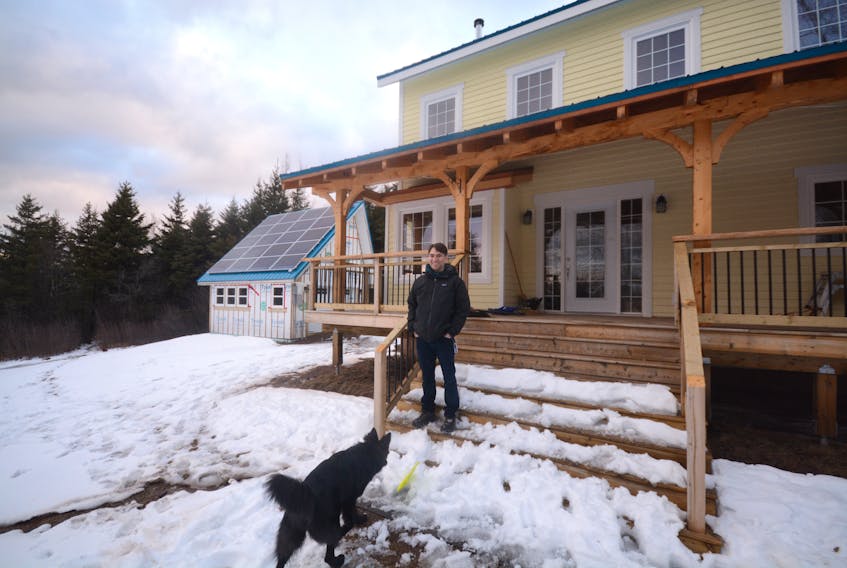UPPER NAPPAN, N.S. – People often talk about living a life of energy self-sufficiency but few people do it. Jason Blanch put his money where his mouth is.
“The bottom line is, we have to live differently and I know we can live differently, so I wanted to build this house this way because I think it’s the right thing to do and I want people to see that it can be done,” said Blanch.
Blanch started building his house in Upper Nappan three years ago, and built most of it himself.
The house is almost complete. His wife and daughter moved into the home last April and Blanch and his son, still living in Amherst, plan to move in sometime in the future.
About 16 months ago he had a garage built next to the house and installed 20 solar panels atop the garage, which charge batteries inside the garage.
“We’re not connected to the power grid at all. We have batteries we run off,” said Blanch.
The batteries can produce up to five-kilowatts of energy.
“On a sunny day, we have up to 4,000 watts of energy coming in. On a cloudy day, we get very little energy.”
Fully-charged batteries provide power to the home for about four days.
“By the fifth day I have to start thinking about charging the batteries.”
When necessary, he charges the battery with a 2,000-watt generator but says he’s rarely had to use it.
“Every time I ran the generator the sun came out the next day.”
The solar panels provide power to the home’s electric baseboard heating, the lights, TV and computers, and most appliances, including the fridge and the dishwasher.
On a sunny day, they can run most of their appliances.
“My wife will say, ‘it’s sunny today, I’m going to vacuum.’”
The solar panels usually provide more power than is used, and the extra power is diverted to the water heater and electric baseboard heater.
Blanch also has propane, which provides energy for the propane stove and helps heat the water.
“We burn propane for the hot water in the winter but, in the summer, we heat the water purely with electricity,” said Blanch. “The propane is the only input that we have from the outside world to the house.”
Blanch would like to, eventually, eliminate the propane.
“I think if I bought a wind turbine then I could get off the propane,” said Blanch.
The home also has a wood stove, but with highly-insulated walls that are 10-inch thick it only takes a few logs to make the house toasty warm.
“When I make a fire, I have to be careful because, unless it’s really cold outside, it quickly gets too hot in here, so I’ll burn a couple logs and let it go out,” said Blanch.
Installation of the solar-power system cost Blanch about $20,000.
“The province of Nova Scotia recently came out with a subsidy where they give you so much money towards buying solar. It makes it cheaper,” said Blanch.
Blanch, a councillor with the Town of Amherst, says both the town and the Municipality of Cumberland County provide renewable energy upgrades to homes in Amherst and Cumberland County.
“It allows people to borrow money to do a solar upgrade to their home and then you pay it back as part of your tax bill.”
Blanch believes energy self-sufficiency is a realistic option, and hopes more people take advantage of it.
“This is something I’ve wanted to for a long time, and I did it. It’s been painless,” said Blanch.









